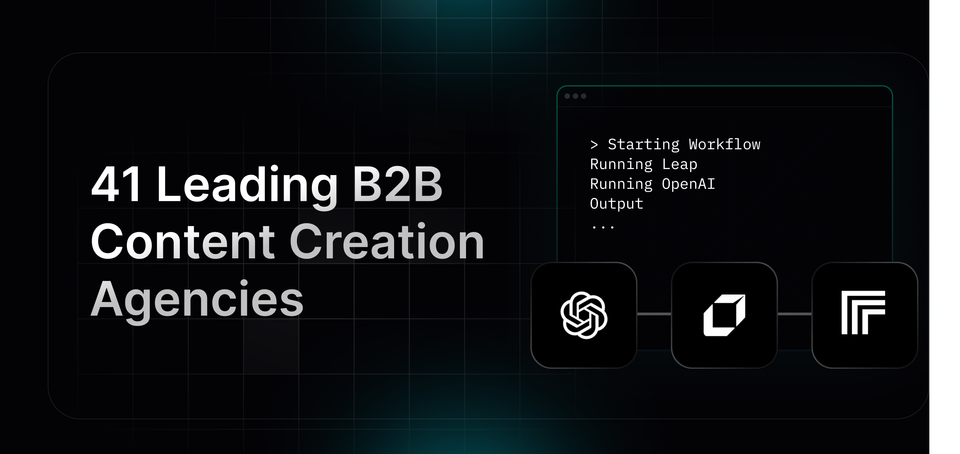19 Tested Techniques for Your Content Marketing E Commerce Strategy
Boost sales with strategic content! Elevate through effective Content Marketing E Commerce. Drive traffic, engage, and sell smartly.

As the e-commerce industry continues to thrive, the power of content marketing in driving online sales has become undeniable. With the right strategy and compelling content creation, businesses can effectively engage their target audience, build brand awareness, and ultimately boost conversion rates.
In this blog, we will explore the world of content marketing e-commerce, uncovering the secrets behind successful campaigns and providing valuable insights on how to leverage this powerful tool to maximize your online presence. Whether you're a seasoned marketer or just starting out, this blog will equip you with the knowledge and skills needed to navigate the ever-changing landscape of content creation in e-commerce. So, grab a cup of coffee and get ready to embark on a journey that will revolutionize the way you approach online sales.

The Importance of Content Marketing In E Commerce

Content marketing plays a pivotal role in the overall e-commerce strategy, serving as a powerful tool to enhance brand visibility and drive customer engagement. By creating and distributing valuable, relevant, and consistent content, businesses can effectively attract and retain their target audience, ultimately leading to increased sales and brand loyalty.
1. Building Brand Awareness
Content marketing is a key driver for brand visibility in the vast landscape of e-commerce. Through the creation of high-quality content, businesses can establish themselves as industry leaders and thought experts.
By delivering content that educates, entertains, and inspires, brands can capture the attention of their target audience and build awareness around their products or services. This, in turn, helps to increase brand recognition and recall, making it more likely for customers to choose their brand over competitors.
2. Establishing Trust and Credibility
One of the most significant challenges in e-commerce is gaining the trust of potential customers. Content marketing addresses this challenge by providing businesses with an opportunity to showcase their expertise, knowledge, and credibility.
By consistently producing valuable and informative content, businesses can position themselves as trusted advisors, nurturing a sense of trust and confidence in their target audience. As consumers increasingly rely on digital platforms for their shopping needs, the ability to establish trust through content becomes even more crucial.
3. Increasing Organic Traffic and SEO
Content marketing also plays a vital role in driving organic traffic to e-commerce websites. By producing content optimized for search engines, businesses can improve their search engine rankings and attract more visitors to their websites.
By incorporating relevant keywords, answering common questions, and providing valuable information, businesses can increase their visibility on search engine result pages. This not only brings more qualified traffic to their website but also enhances the chances of conversion into customers.
4. Engaging and Nurturing Customers
Customer engagement is paramount in the e-commerce world, as it helps businesses build long-term relationships and drive repeat purchases. Content marketing excels in this aspect by providing brands with a platform to consistently engage and communicate with their customers.
Whether it is through blog posts, social media updates, videos, or newsletters, businesses can create content that resonates with their audience, encourages interaction, and fosters a sense of community. By delivering personalized and valuable content, businesses can nurture their customers throughout their buying journey and inspire them to become loyal advocates for their brand.
5. Enhancing the Customer Experience
Content marketing also contributes to enhancing the overall customer experience in the e-commerce space. By delivering relevant and informative content, businesses can address common pain points, provide solutions, and offer a seamless shopping experience.
Whether it is through product guides, how-to articles, or customer reviews, content can assist customers in making informed purchasing decisions. This not only leads to higher customer satisfaction but also reduces the likelihood of returns or negative experiences.
Elevating E-commerce Success
Content marketing is an indispensable component of an effective e-commerce strategy. It significantly contributes to brand visibility, customer engagement, and overall success in the digital landscape. By investing in a robust content marketing strategy, businesses can differentiate themselves, establish trust, drive organic traffic, and create meaningful connections with their target audience.
Partner with Leap and experience the power of AI Workflows today.
Related Reading
- Artificial Intelligence Content Creation
- Video Content Creation
- Facebook Content Creation
- Content Creation Process
- Content Creation Examples
- Content Creation Strategy
- Content Creation Ideas
- Social Media Content Creation
- Ai Content Creation

19 Tested Techniques for Your Content Marketing E Commerce Strategy

1. Develop Buyer Personas
Start by understanding your target audience's needs, preferences, and pain points. Create detailed buyer personas to tailor your content to their specific interests.
2. Conduct Keyword Research
Use tools like SEMrush or Google Keyword Planner to identify relevant keywords for your industry. Incorporate these keywords naturally into your content to improve search engine rankings.
3. Create High-Quality, SEO-Optimized Content
Craft engaging and informative content that aligns with your audience's interests. Optimize your content for SEO by including relevant keywords and meta tags.
4. Utilize Video Marketing
Videos can capture your audience's attention and convey information effectively. Create product demos, tutorials, or brand stories to engage and educate your customers.
5. Leverage User-Generated Content
Encourage your customers to share their experiences with your products or services. User-generated content adds authenticity and social proof to your brand.
6. Offer Personalized Recommendations
Use data analytics to understand your customers' behavior and preferences. Provide personalized recommendations and product suggestions to enhance their shopping experience.
7. Optimize Your Website Design
Ensure your website is user-friendly, visually appealing, and easy to navigate. A seamless browsing experience will encourage visitors to stay longer and make purchases.
8. Implement Influencer Marketing
Collaborate with influencers or industry experts to promote your brand. Their endorsement can significantly increase your reach and credibility.
9. Create Compelling Product Descriptions
Craft persuasive product descriptions that highlight the unique features and benefits of your offerings. Use storytelling techniques to captivate your audience.
10. Engage with Social Media
Establish a strong presence on social media platforms relevant to your target audience. Regularly share valuable content, respond to comments, and engage in conversations.
11. Implement Email Marketing Campaigns
Build an email list and send targeted campaigns to nurture leads and drive conversions. Personalize your emails and provide exclusive offers to encourage engagement.
12. Optimize Your Website for Mobile
With the rise of mobile shopping, ensure your website is mobile-friendly and responsive. This will improve the user experience and boost conversion rates.
13. Offer Discounts and Promotions
Create special offers, discounts, and limited-time promotions to incentivize purchases. Promote them through various channels to generate excitement and urgency.
14. Leverage Content Syndication
Distribute your content on reputable platforms and industry publications to expand your reach. This will increase brand visibility and drive traffic back to your website.
15. Implement Live Chat Support
Provide real-time assistance to website visitors through live chat support. This improves customer satisfaction and helps resolve queries quickly, leading to higher conversion rates.
16. Maximize Customer Reviews and Testimonials
Encourage satisfied customers to leave reviews and testimonials. Positive feedback builds trust, increases credibility, and influences purchase decisions.
17. Launch a Referral Program
Incentivize your customers to refer their friends and family to your e-commerce store. Offer rewards or discounts for successful referrals to drive customer acquisition.
18. Leverage Influencer Affiliate Programs
Collaborate with influencers to promote your products or services through affiliate marketing. This allows you to reach a wider audience and pay only for successful conversions.
19. Measure and Analyze Results
Use analytics tools to track the performance of your content marketing efforts. Analyze data such as website traffic, conversion rates, and engagement metrics to optimize your strategy.
Supercharging Work with AI-Powered Automations
Leap helps you to automate your work with the power of AI. Partnered with Zapier, Vercel, and more, Leap enables you to supercharge your work by allowing you to create custom AI automations. Create sophisticated AI automations with no-code. Connect the tools you love with best-in-class AI text, image, and audio models.
Supercharge your existing tools with seamless AI integrations to OpenAI, Microsoft, and more. From summarizing documents, to voice translation, to AI call transcription, to AI avatar and asset generation, to SEO automation, automate anything with Leap Workflows. The opportunities for automation are endless with Leap workflows.
Try Leap's AI Workflows tool for free today.
Related Reading
- Ugc Content Creation
- Content Marketing Content Creation
- Content Creation Seo
- Content Creation Workflow
- Ai Social Media Content Creation
- Content Creation Tips
- B2b Content Creation
- Content Creation For Instagram
- Ai Video Content Creation
- How To Use Chatgpt For Content Creation
- Content Creation Ideas For Youtube
- Content Creation Ideas For Tiktok
- Content Creation Ideas For Instagram
How To Identify Your Target Audience for Content Marketing E Commerce

Businesses must carefully identify and define their target audience. By doing so, they can create content that resonates with their customers and drives engagement and sales. But how can businesses effectively identify and define their target audience in the context of content marketing for e-commerce? Let's explore this topic further.
1. Conduct Market Research to Uncover Customer Needs and Preferences
To effectively identify and define their target audience, businesses must start by conducting thorough market research. This involves gathering data and insights about their potential customers, such as their demographic information, interests, behaviors, and purchasing habits. By understanding the needs, preferences, and pain points of their target audience, businesses can tailor their content marketing efforts to address these specific requirements and stand out from the competition.
2. Analyze Customer Data and Engagement Metrics
Businesses have access to valuable customer data and engagement metrics that can provide insights into their target audience. By analyzing data from various sources such as website analytics, social media metrics, and email marketing campaigns, businesses can gain a deeper understanding of their customers' online behavior, preferences, and engagement patterns.
This data can help businesses refine their content marketing strategies and create more personalized and targeted content that effectively captures the attention of their audience.
3. Develop Buyer Personas to Humanize Your Target Audience
Creating buyer personas is a powerful way to humanize and understand your target audience. A buyer persona is a fictional representation of your ideal customer, based on real data and insights.
By developing detailed buyer personas that include information such as demographics, motivations, goals, challenges, and preferences, businesses can gain a deeper understanding of their target audience. These personas serve as a reference point when creating content, ensuring that it aligns with the needs and interests of the intended audience.
4. Utilize Social Listening to Tap into Audience Conversations
Social media platforms have become a hub for conversations between customers and businesses. By utilizing social listening tools, businesses can monitor and analyze these conversations to gain valuable insights into their target audience.
Social listening involves tracking mentions, hashtags, and keywords related to your industry and brand, allowing businesses to identify trends, gather feedback, and understand the sentiments and opinions of their customers. This information can then be used to create content that directly addresses the concerns and interests of their target audience.
5. Test and Iterate to Refine Your Target Audience
Identifying and defining a target audience is not a one-time process. It requires continuous testing and iteration to ensure that businesses stay relevant and adaptable in the ever-changing e-commerce landscape.
By monitoring the performance of their content marketing efforts and gathering feedback from their audience, businesses can refine their target audience definition and make adjustments to their strategies accordingly. This iterative approach allows businesses to stay agile and responsive to the evolving needs and preferences of their audience.
By following these steps and continuously refining their understanding of their target audience, businesses can create content marketing strategies that effectively engage and convert their customers. Content marketing for e-commerce is all about delivering the right message to the right audience at the right time.
Essential KPIs To Track

Content marketing has become a vital tool for businesses to engage with their audience, build brand awareness, and drive conversions. To truly measure the success and return on investment (ROI) of their content marketing efforts, business owners need to track specific metrics and key performance indicators (KPIs). Let's explore the essential metrics that can help gauge the effectiveness of content marketing in the e-commerce space.
1. Website Traffic: The Foundation of Success
The first metric to monitor is website traffic. By tracking the number of visitors to your e-commerce site, you can assess the impact of your content marketing efforts. This data will provide insights into whether your content is attracting and engaging your target audience. Consider using tools like Google Analytics to track daily, weekly, and monthly traffic trends.
2. Conversion Rate: Turning Visitors into Customers
While driving traffic is important, the ultimate goal of content marketing in e-commerce is to convert visitors into customers. The conversion rate is a crucial KPI that measures the percentage of visitors who take a desired action, such as making a purchase or signing up for a newsletter. Tracking this metric will help you evaluate the effectiveness of your content in driving conversions and identify areas for improvement.
3. Average Order Value (AOV): Maximizing Revenue
To assess the overall impact of your content marketing efforts on your e-commerce business, it's crucial to monitor the average order value. This metric indicates the average amount spent by customers per transaction. By analyzing AOV, you can determine whether your content is effectively encouraging customers to make larger purchases. Increasing the AOV can significantly impact your revenue and ROI.
4. Customer Lifetime Value (CLV): Building Long-Term Relationships
Content marketing in e-commerce goes beyond immediate conversions. It aims to build lasting relationships with customers. Customer lifetime value is a metric that estimates the total value a customer brings to your business over their entire relationship with you. Tracking CLV allows you to understand the long-term impact of your content marketing efforts and tailor your strategies accordingly.
5. Engagement Metrics: Ensuring Audience Interaction
Engagement metrics such as time spent on site, bounce rate, and social media shares are vital indicators of how well your content resonates with your audience. These metrics provide insights into whether your content is captivating and compelling enough to keep visitors engaged. Pay attention to comments, shares, and likes on social media platforms to gauge the level of audience interaction.
6. Return on Investment (ROI): Assessing Content Marketing Value
The ROI of your content marketing efforts in e-commerce is a fundamental metric to track. It measures the financial return on the resources invested in content creation and distribution. To calculate ROI, compare the costs of your content marketing campaign against the revenue generated. By analyzing ROI, you can determine the effectiveness and profitability of your content marketing strategy.
7. Customer Acquisition Cost (CAC): Evaluating Cost Efficiency
While ROI measures the overall financial performance, customer acquisition cost (CAC) evaluates the cost efficiency of your content marketing efforts. CAC tracks the average cost of acquiring a new customer through content marketing channels. By monitoring CAC, you can identify whether your content marketing strategies are cost-effective and sustainable in acquiring new customers.
Tracking these metrics and KPIs will provide a comprehensive understanding of the impact and effectiveness of your content marketing efforts in the e-commerce space. By continuously monitoring and analyzing these data points, you can optimize your strategies, enhance customer engagement, and maximize your ROI.
Integrating SEO Best Practices Into Your E Commerce Content Marketing Strategy

Content marketing and SEO are integral components of a successful online business. The integration of SEO best practices aligns seamlessly with content marketing strategies, working in tandem to enhance the visibility, reach, and engagement of e-commerce websites. By optimizing product pages, businesses can maximize their online presence, attract organic traffic, and ultimately increase conversions. Let's delve into the critical considerations in optimizing product pages and how they contribute to the overall content marketing strategy.
1. Keyword Research and Targeting: The Foundation of Optimization
Effective keyword research is the cornerstone of any SEO strategy. By identifying relevant keywords that align with the products offered, e-commerce businesses can optimize their product pages to attract the right audience.
Keyword research tools such as Google Keyword Planner, SEMrush, and Moz Keyword Explorer can provide valuable insights into search volume, competition, and related keywords. Incorporating these keywords naturally into product titles, descriptions, and headings ensures that search engines understand the page's content and relevance.
2. Compelling and Unique Product Descriptions: Captivate the Audience
Product descriptions play a crucial role in engaging potential customers and driving conversions. They should be well-crafted, concise, and unique, highlighting the key features and benefits of the product. Incorporating relevant keywords naturally within the description helps search engines index the page accurately. Providing detailed information about the product, including specifications, dimensions, and usage instructions, can boost trust and credibility, leading to higher conversion rates.
3. High-Quality Visual Content: The Power of Images and Videos
Visual content is a powerful tool in capturing the attention of online shoppers. High-quality images and videos not only provide a better understanding of the product but also enhance the overall user experience.
Optimizing visual content by compressing images, using descriptive filenames, and adding alt tags allows search engines to crawl and index them effectively. Incorporating schema markup for product images and videos can enhance visibility in search engine results pages (SERPs), driving more organic traffic to the e-commerce website.
4. User-Generated Content and Reviews: Building Trust and Authority
User-generated content, such as customer reviews and ratings, is a valuable asset for e-commerce websites. Not only does it provide social proof, but it also contributes to the website's SEO efforts.
Search engines consider user-generated content as fresh and relevant, leading to higher rankings in SERPs. Encouraging customers to leave reviews, responding to feedback, and showcasing positive testimonials on product pages can significantly impact the website's visibility and credibility.
5. Mobile Optimization: Capturing the Growing Mobile Market
With the increasing use of smartphones for online shopping, mobile optimization is crucial for e-commerce websites. Ensuring that product pages are responsive and load quickly on mobile devices is essential for a positive user experience. Mobile optimization is a key factor in search engine rankings, as search engines prioritize mobile-friendly websites. Optimizing product images, using responsive design, and implementing AMP (Accelerated Mobile Pages) can enhance the website's mobile performance, leading to higher rankings and increased visibility.
Integrating SEO best practices into content marketing strategies for e-commerce websites is essential for driving organic traffic, increasing conversions, and boosting overall online presence. By considering critical factors such as keyword research, compelling product descriptions, visual content optimization, user-generated content, and mobile optimization, businesses can optimize their product pages to connect with their target audience effectively.
Revolutionize Your Workflow
Leap helps you to automate your work with the power of AI. Partnered with Zapier, Vercel, and more, Leap enables you to supercharge your work by allowing you to create custom AI automations. Create sophisticated AI automations with no-code. Connect the tools you love with best-in-class AI text, image, and audio models.
Supercharge your existing tools with seamless AI integrations to OpenAI, Microsoft, and more. From summarizing documents, to voice translation, to AI call transcription, to AI avatar and asset generation, to SEO automation, automate anything with Leap Workflows. The opportunities for automation are endless with Leap workflows. Try Leap’s AI Workflows tool for free today.
Create Game Changing Automations Today With Leap’s AI Workflows
Content marketing has become an essential strategy for businesses to engage with their target audience. Content marketing e-commerce refers to the use of content to drive traffic, attract leads, and ultimately convert them into paying customers in the online shopping sphere. The sheer volume of content required to stay competitive can be overwhelming, and marketers are constantly seeking ways to streamline their processes and enhance efficiency. This is where Leap's AI Workflows come into play.
Automating Your Workload with Leap's AI Workflows
Leap is a powerful platform that harnesses the capabilities of AI to automate tasks and processes, enabling businesses to work smarter and more efficiently. With its seamless integration capabilities, Leap allows you to connect your favorite tools to create custom AI automations without the need for coding skills.
Enhancing Your Content Creation with AI Text Models
One of the most time-consuming aspects of content marketing is creating engaging and informative written content. With Leap's AI Text Models, you can supercharge your content creation process. These models are trained on vast amounts of data, enabling them to generate high-quality, SEO-optimized content quickly and efficiently. Whether you need blog posts, social media captions, or product descriptions, Leap's AI Text Models can help you create compelling content that resonates with your target audience.
Captivating Your Audience with AI Image Models
In the visually-driven world of e-commerce, captivating imagery plays a crucial role in attracting and engaging customers. Leap's AI Image Models allow you to automate the process of image generation, enhancing your brand's visual identity. From product images to social media visuals, these models can generate stunning visuals that align with your brand's aesthetic and messaging, allowing you to save time and focus on other essential aspects of your content marketing strategy.
Breaking Language Barriers with AI Voice Translation
In an increasingly globalized marketplace, businesses need to cater to customers from diverse linguistic backgrounds. Leap's AI Voice Translation feature enables you to break language barriers by automatically translating your content into different languages. Whether it's customer support calls, video scripts, or website content, AI Voice Translation ensures that your message reaches a wider audience, expanding your market reach and potential customer base.
Streamlining Communication with AI Call Transcription
Effective communication is vital for any e-commerce business, particularly when it comes to customer interactions. With Leap's AI Call Transcription feature, you can automate the process of transcribing calls, saving you time and effort. These transcriptions can be used for various purposes, such as training materials, customer feedback analysis, or quality assurance. By streamlining communication, you can identify areas for improvement, enhance customer satisfaction, and ultimately drive sales.
Creating Dynamic Avatars and Assets with AI
Personalization is a key element in successful e-commerce strategies. With Leap's AI Avatar and Asset Generation, you can create dynamic avatars and assets that resonate with your target audience. Whether it's a virtual assistant guiding customers through their shopping journey or personalized product recommendations, these AI-generated assets enhance the overall customer experience, making it more engaging and memorable.
Revolutionizing SEO with Automation
Search engine optimization (SEO) is essential for ensuring that your content is discoverable by search engines and, ultimately, your target audience. Leap's AI Workflows can automate various SEO tasks, such as keyword research, content optimization, and performance tracking. By leveraging AI to streamline these processes, you can improve your website's search rankings, attract more organic traffic, and boost conversions.
Try Leap's AI Workflows Today
In an industry where time is of the essence, Leap's AI Workflows can transform your content marketing e-commerce strategy by automating repetitive tasks and enhancing efficiency. From content creation to translation, transcription, and SEO, Leap offers a wide range of AI-powered tools that can supercharge your existing workflow.
Don't miss out on the opportunity to revolutionize your content marketing e-commerce strategy - try Leap's AI Workflows tool for free today.
Related Reading
- Content Creation Tools
- Content Creation Agency
- Content Creation Software
- Automated Content Creation
- Ai Tools For Content Creation
- Social Media Content Creation Services
- Social Media Content Creation Agency
- Best Content Creation Apps
- Seo Content Creation Services
- Digital Content Creation Tools
- Social Media Content Creation Tools
- Video Content Creation Agency
- B2B Content Creation Agency
- Tiktok Content Creation Agency
- Content Creation Marketing Agency




